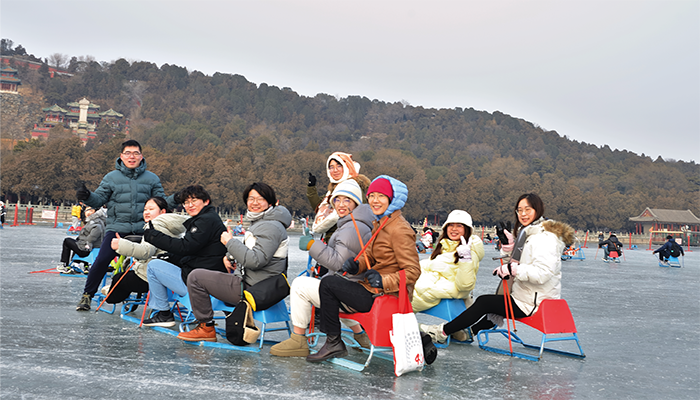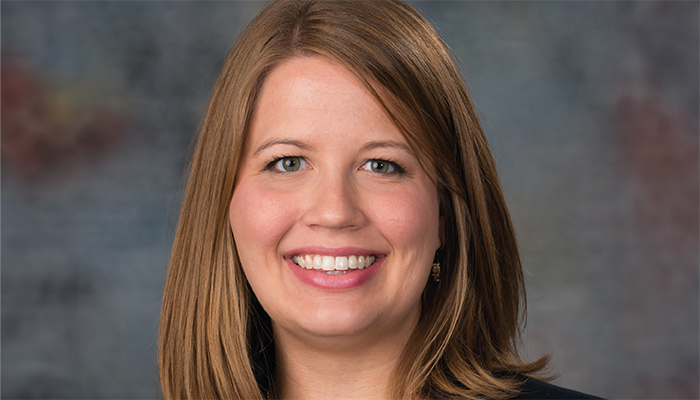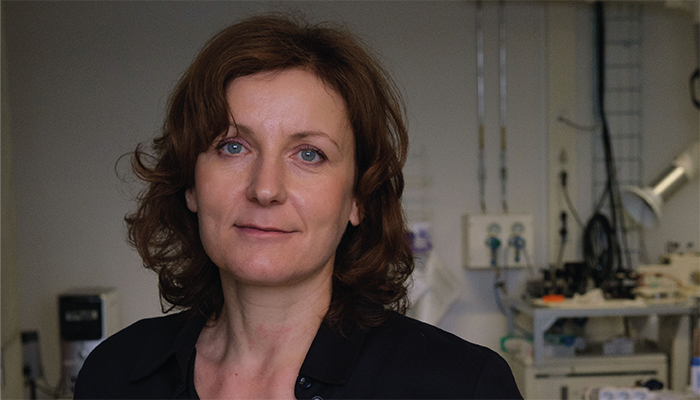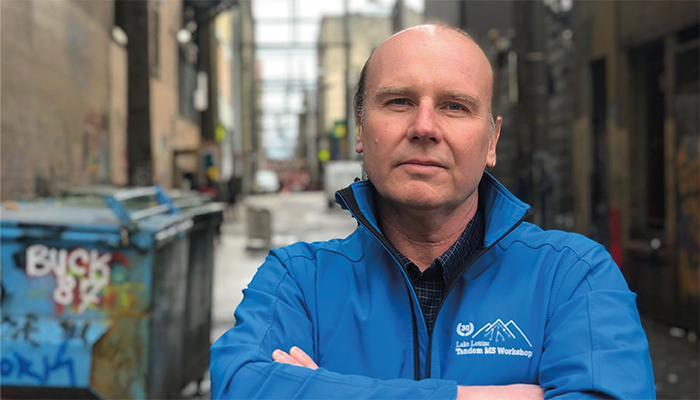International Mass Spectrometry Conference (IMSC) 2024 is set to take place in Melbourne, Australia, on August 17–23, 2024. In the lead-up to the show, we’ll be chatting with some of the organizers and expert speakers to find out more about their research passions, what they’re most looking forward to at the show, and why you’ll want to seriously consider making the trip “Down Under” in August.
Here, we speak with five speakers, spanning three continents, to find out about their research interests and plans for the conference.
I was mentored by Professors Scott A. McLuckey and Graham R. Cooks during my PhD and post-doc training at Purdue University, respectively, with a focus on gas-phase ion chemistry of biomolecules. I was fascinated by the distinct fragmentation chemistry associated with peptide radical ions, as observed in electron transfer dissociation, and the wealth of structural information they can provide. I carried on this interest to my independent research and utilized radical chemistry as a unique approach to characterize lipids at detailed structural levels by mass spectrometry. Based on this principle, my group has developed a suite of lipidomic tools that can resolve and quantify coexisting lipid isomers. We are leveraging these cutting-edge tools to uncover unusual lipid structures and offer new insights into lipid metabolism linked to health and disease.
Yu Xia
Professor, Department of Chemistry, Tsinghua University, China

Structural lipidomics stands as an exciting and fast-evolving research field, particularly given the structural complexity of lipids, which encompasses over 40,000 documented structures. This complexity underscores the urgent need for the development of innovative MS/MS methods capable of discerning subtle structural differences in lipids. Due to active research efforts from many academic labs, the arsenal of available isomer-resolved MS/MS techniques has significantly expanded in the past decade. Notably, several of these methods have already been integrated into commercial mass spectrometers, thereby enhancing accessibility to deep-structural lipidomic profiling for a broader scientific community. I strongly believe that isomer-resolved MS/MS will also serve as a catalyst for advancing other important frontiers of lipidomics, such as single cell lipidomics, spatial lipidomics, and temporal lipidomics, by providing an isomer-resolution into the research.
At IMSC, I will present the latest development of isomer-resolved tandem mass spectrometry (MS/MS) methods and integrated workflows developed in my group, which offer large-scale lipid analysis at detailed structural levels, including the location of C=C, sn-position, and methyl branching. I will showcase how we have pushed the boundaries of detection for lipids present in low abundance, such as glycosphingolipids and phosphoinositol phosphates. By combining lipid class-specific enrichment strategies with orthogonal separations and isomer-resolved MS/MS, we reveal an unexpected diversity of these lipid classes in mammalian lipidome, which would have otherwise remained elusive. More importantly, I will demonstrate that isomer quantitation at detailed structural levels suffers less from interpersonal variation and enables more sensitive discovery of differential lipids for disease phenotyping.
My research focuses on food proteomics, specifically using mass spectrometry to detect, quantify, and characterize food allergens. From my perspective, food systems are especially interesting opportunities to apply proteomics and MS methods. In very few other situations would proteomics researchers consider doing things like putting a bunch of different organisms together, heating them in an oven, and then trying to analyze the proteins. It makes for some very interesting and challenging experiments that deal with materials that we see and consume every day. We also still have so much to learn about the proteins in food, how they are impacted by matrix components and processing, and how they interact with our bodies when we eat them.
Reflecting on conversations with the food-allergic community, it’s clear that for many individuals and families, life with a food allergy can be challenging and stressful. Despite the many research and clinical advances that have been made over the last several decades, many food-allergic individuals face day-to-day barriers with selecting foods that they feel are safe to eat. In many instances, they encounter confusing labeling or other unclear information from manufacturers and foodservice providers. While these hurdles may seem quite distant from the world of proteomics, MS methods are emerging as important tools for this practical application. MS methods can provide the type of accurate and precise quantification of food allergen proteins that is critical in order for food manufacturers and regulatory authorities to feel confident implementing risk-based policies for food allergen management. Many stakeholders are recognizing that using risk-based approaches for decision-making, especially with respect to so-called “may contain” labeling, can provide clearer communication to food-allergic individuals and enable them to make food choices more confidently and consistently. Having robust and reliable analytical methods, including MS methods, to support these risk-based approaches is essential. Ultimately, implementation of these strategies will help work towards the goals of ensuring the safety of food products for allergic individuals, expanding available food choices, and improving quality of life for allergic individuals and their families.
Melanie Downs
Associate Professor, Food Allergy Research and Resource Program (FARRP) in the Department of Food Science and Technology, University of Nebraska-Lincoln, USA

I am a chemist who has always been passionate about understanding how reactions proceed in detail. Mass spectrometry has much to offer to many chemistry fields. My research interests evolved from organic and organometallic chemistry at the beginning to the research questions of colleagues with whom I collaborate. I enjoy developing new methods to answer questions that cannot be addressed by conventional approaches. I find it highly rewarding when we get beyond the current state-of-the-art and help push some chemistry fields further by having a new analytical approach.
I am always curious about the development of new techniques and methods. One area that particularly excites me is the integration of machine learning into mass spectrometry. The field has seen significant advancements in applying machine learning, and I am eager to hear about the latest developments. How close are we to transitioning from machine learning to true artificial intelligence in mass spectrometry? This progression could revolutionize data analysis and interpretation, opening up new possibilities for research and application.
At IMSC, I will discuss using mass spectrometry and cryogenic ion spectroscopy to study electrocatalytic reactions and discover new reactions. Electrocatalytic reactions are gaining prominence not only in traditional applications such as CO2 reduction and fuel cells, but also in organic synthesis. Mass spectrometry offers significant advantages in studying these reactions due to its excellent sensitivity. Electrochemical and electrocatalytic processes often experience side reactions, which can be challenging to detect and control. Mass spectrometry has excellent sensitivity and when combined with ion spectroscopy and ion mobility, provides detailed structural information even for minor impurities, and can uncover these undesired reactions. This capability is crucial for improving electrosynthetic reactions and ensuring their efficiency. Additionally, the ability to detect trace amounts of side products can lead to the discovery of new reactions that might otherwise go unnoticed. I will share a fascinating story of serendipity where mass spectrometry enabled us to develop a novel approach for preparing derivatives of natural compounds.
Jana Roithova
Professor, Spectroscopy and Catalysis, Radboud University, the Netherlands

I’m an instrumental analytical mass spectrometrist, and enjoy all aspects of analytical science from innovating new devices, developing new strategies for chemical measurement, and in general, trying to solve peoples chemical measurement challenges. A good part of my career has been aimed at bringing mass spectrometry to “out of lab” situations, where it can provide timely measurements to better guide decisions. Current research interests center on direct mass spectrometry strategies that frequently involve ambient ionization without chromatographic separations, with environmental, clinical and forensic applications to benefit society. Areas of benefit include understanding how tire wear toxins impacting salmonid spawning mortality can be better addressed, developing next generation clinical disease diagnostics, and harm reduction drug checking to reduce overdose and mortality from toxic illicit drugs.
I’ll be presenting at IMSC2024 on the evolution of paper spray mass spectrometry (PS-MS) for harm reduction drug checking as a tool to help reduce overdose and mortality in the opioid overdose crisis. This work has grown from an academic curiosity to a publicly available on-site service here in British Columbia, with well over 20,000 drug checks provided at no cost for people who use drugs since fall 2019. PS-MS is simple to use, provides rapid measurements that are specific, sensitive and quantitative, and can not only measure “targeted drugs,” but also identify new threats that constantly appear in the illicit drug supply. Initially evaluated as part of my research program at Vancouver Island University, collaborations with social scientists and chemists at the University of Victoria (with Provincial funding) have put our PS-MS system in use in a downtown location, where it provides rapid drug checking to clients as a walk in service, as well as providing illicit supply surveillance data for samples collected and sent in from throughout British Columbia. It’s nice to see academic research translate into an immediately useful outcome with direct societal benefits.
Chris Gill Co-Director
Applied Environmental Research Laboratories (AERL), Vancouver Island University (VIU); Adjunct Professor, University of Victoria; Canada; and Affiliate Professor, University of Washington Seattle, USA

I am a biochemist by training and first got fascinated by the power of mass spec during my PhD (a long time ago!) when I used proteomics to understand bacterial stress response. 20 years ago, I moved to Singapore to work on lipids and those weird fatty acids tuberculosis-causing mycobacteria have. I am now a Principal Investigator at SLING, the Singapore Lipidomics Incubator. I focus primarily on clinical translation: how we move research-grade mass spec assays out of the lab and into clinical applications.
What keeps me up at night is how to ensure quality in the long run. We all know how to validate mass spec assays for a publication and then move on. But how do we validate that it works over months and years? Especially if patient results are at stake, we must be sure that a method performs consistently over time, regardless of the operator. At SLING, we have started the tedious process of establishing the quality standard ISO15189. We aim to be accredited by the end of the year. This might be a good solution to tackle the quality assurance tasks.
At IMSC2024, I will talk about clinical translation of lipid metabolites, from basic research into an assay that’s now available at leading clinical labs. I will highlight the various steps and hurdles on the way. As researchers, we can learn a great deal from mass spectrometrists working in diagnostic labs, especially for quality control. One useful concept is ring trials, or interlaboratory studies. I will highlight ongoing ring trials, organized by the lipidomics community, that hopefully pave the way for clinical translation of lipid panels.
Anne K. Bendt
Deputy Director and Principal Investigator, Singapore Lipidomics Incubator (SLING), Life Sciences Institute; Co-founder and Chair, FeMS

Meet the Organizers
Gavin Reid – on the themes of IMSC:
“We’ve split the conference up into three main groups or thematic areas. The first covers life sciences – pharma, health and disease. The second we’re calling environmental science, which will cover climate science, environmental monitoring, and the Earth sciences – the latter being an interesting area that is often overlooked in many international meetings. Australia has a rich history of mining and exploiting minerals – and mass spectrometry has always played a key role in their discovery and characterization, for example in offshore oil fields or minerals processing. Mass spec is also having an impact in “beyond Earth sciences” – to understand questions about the origin of life. The third key area spans fundamental instrumentation and methods. I don’t think you can have a mass spectrometry conference where you’re not looking at developments here; this is an area close to my own heart due to my lab’s focus over many years to study the fundamentals of the ion chemistry that occurs inside a mass spectrometer.”
Read the full article
Michelle Colgrave – why she decided to help with IMSC:
“First and foremost, I wanted to ensure that the domain areas of agriculture and food science were included in the program, given the impact that can be delivered by addressing major challenges like food security and quality and their link to sustainable development goals. Secondly, I wanted to support the career development of early career researchers. One of the first international conferences that I attended was IMSC – in Barcelona over two decades ago. As a PhD candidate at that time, I was exposed to cutting-edge research trends and developments, I began to create my scientific network and I had the opportunity to present my research on a global stage. This experience was invaluable – and I wanted to play a role in providing this same opportunity for early career researchers to participate in an event showcasing the state-of-the-art in mass spectrometry application for impact science delivery.”
Read the full article
Michael Sinden – what he’s looking forward to at IMSC:
“I’m also really excited about the Innovation Stage. It’s a really cool part of IMSC each time it’s run, where sponsors and exhibitors can show off their newest products in a fun and lively environment. I’ve been involved in the stage design and making sure it fits perfectly with the upbeat, dynamic vibe we’re going for this year. It’s placed right in the heart of the action, in the sponsors' area, which should add an interesting twist with all the energy of great lighting, sound, and a crowd that’s engaged.
“IMSC is in Melbourne this year, my hometown. I’m excited about the opportunity to help put together something world-class right here where I live, and show off not just the local talent from the famous Parkville Health and Research Precinct, but also our amazing city and its unique vibe. The ‘world’s most livable city’ title has been awarded to us one too many times to ignore (six years in a row, I think) – so I want to help bring as many people to this place as I can.”
Read the full article
Nicola Gray – on representation at IMSC:
“Some of the biggest trends I see in mass spectrometry are sustainability and diversity and inclusion, which are reflected in all aspects of the conference program. These themes are crucial for continued advancement of the field. As an active member of the Females in Mass Spectrometry (FeMS+) initiative, the prioritization of a diverse program of speakers, short course leaders and workshop organizers is particularly fantastic to see. FeMS+ is a community-led initiative to support women in the field of mass spectrometry, and will have a big presence at the conference so please come and say hello!”
Read the full article




